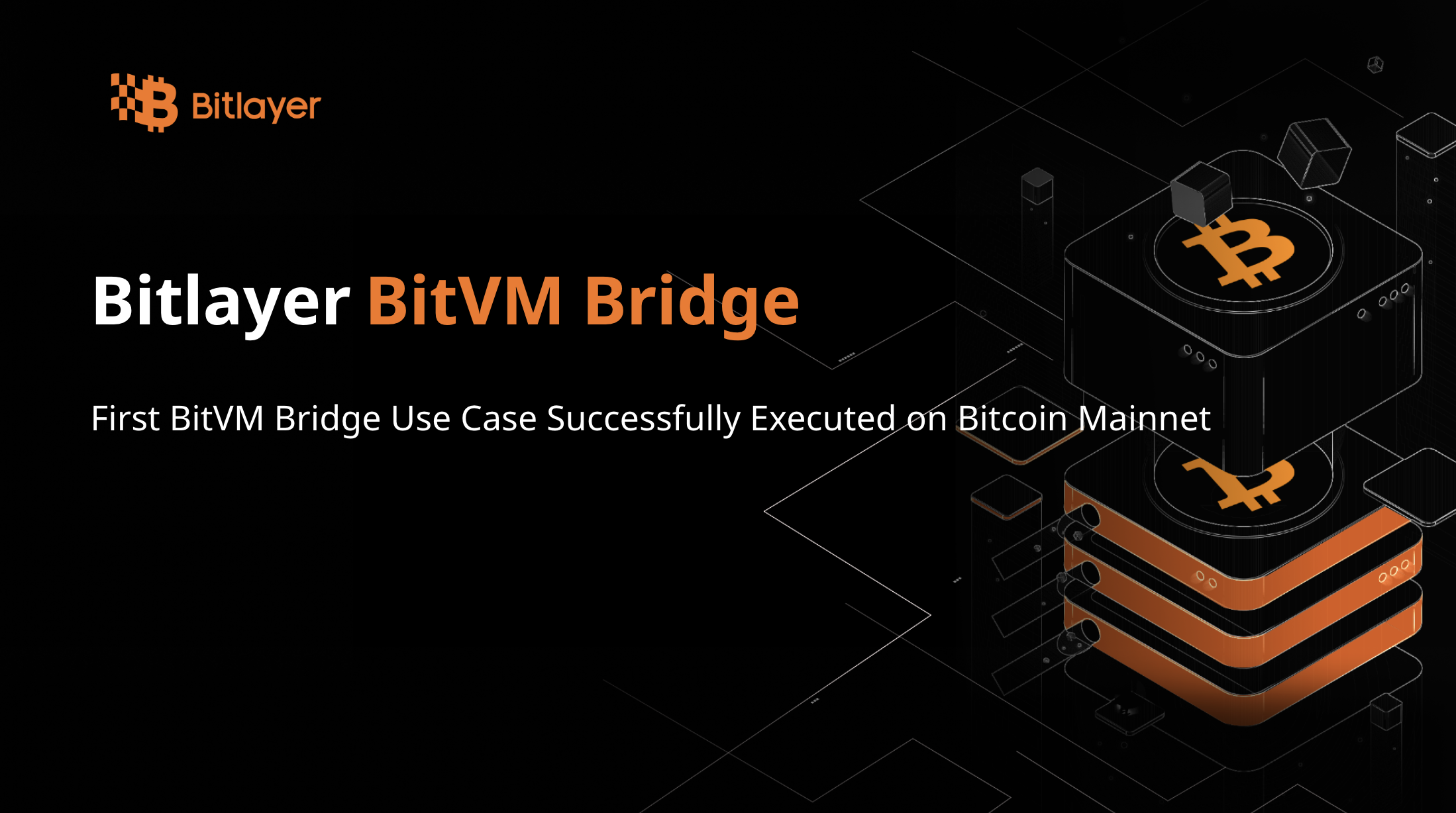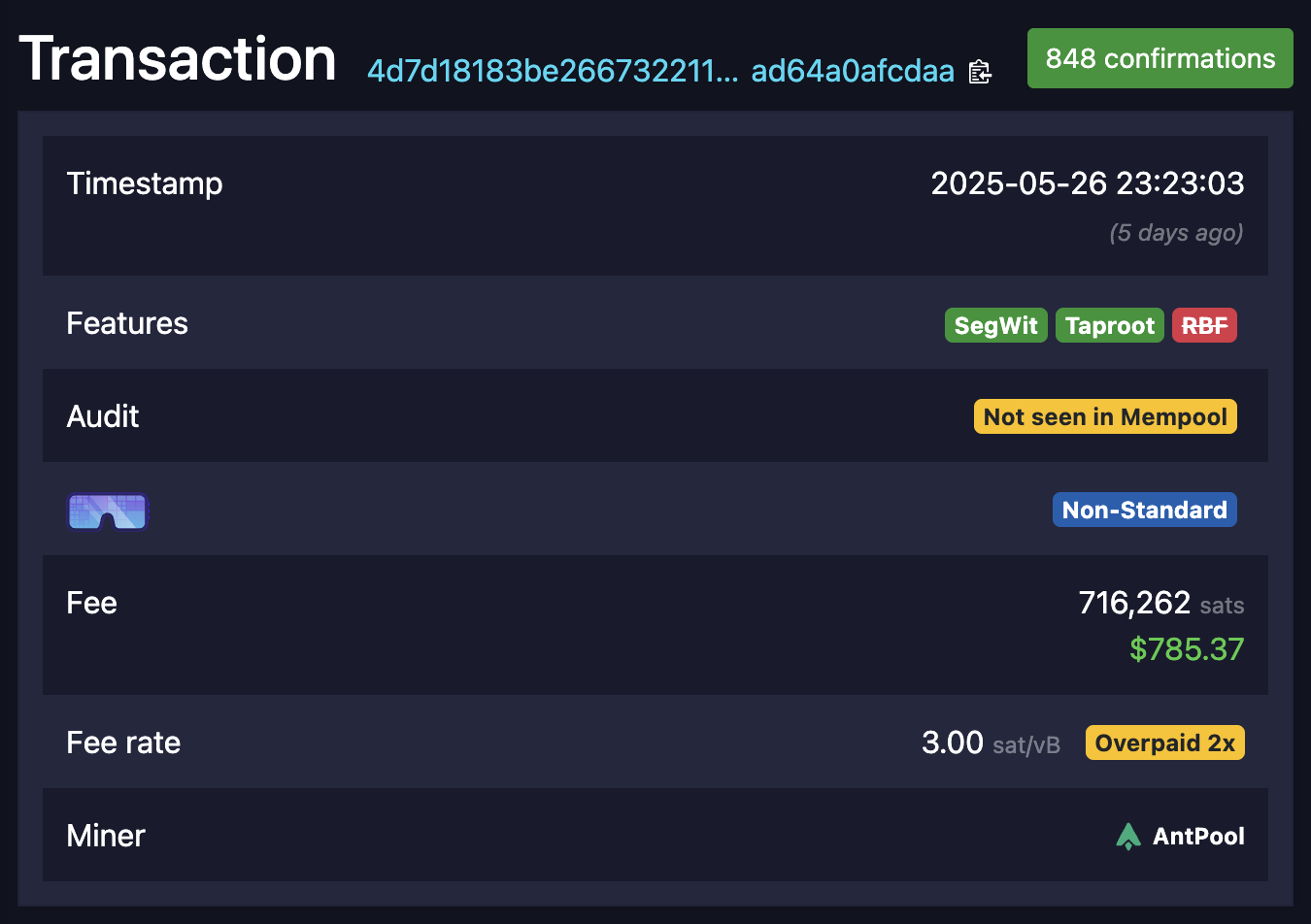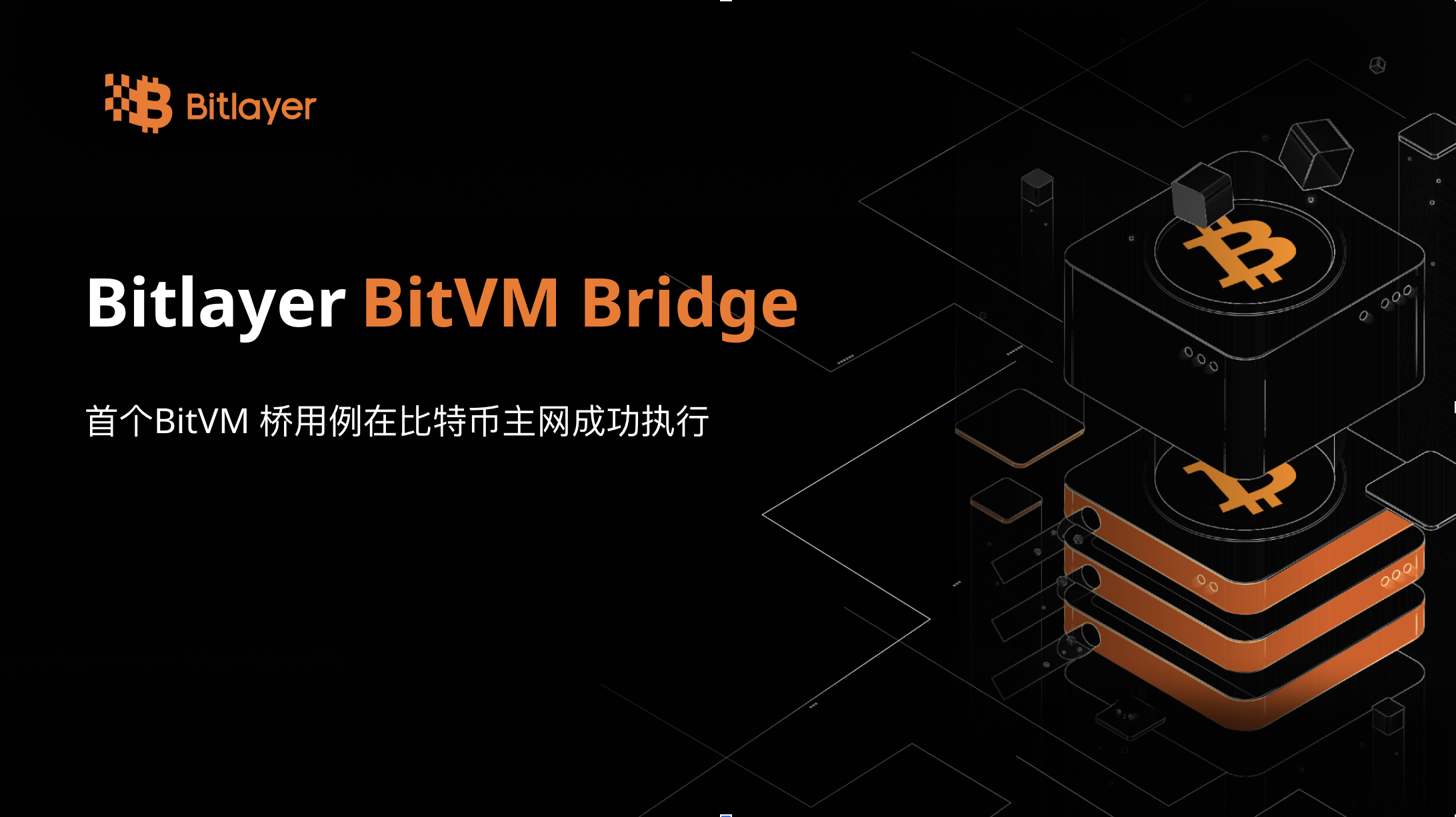
First BitVM Bridge Use Case Successfully Executed on Bitcoin Mainnet
Bitlayer is thrilled to announce a landmark achievement: the successful demonstration of two BitVM Bridge use cases live on the Bitcoin mainnet. This milestone not only showcases the full functionality and robust security of our BitVM Bridge but critically proves the efficacy of our strategic partnerships with mining pools in processing Non-Standard Transactions (NSTs) – a long-standing challenge for BitVM bridges.
On March 31st, the Bitlayer team initially showcased BitVM’s potential on bitvmnet, a dedicated testnet. To prototype effectively on bitvmnet, we had to modify the Bitcoin core client to accommodate NSTs, which are transactions typically larger than the 400KB default mempool policy allows. Overcoming this NST problem on the mainnet was the final crucial step for our product.
Just days ago, Bitlayer announced key partnerships with several mining pools, specifically aimed at solving the NST challenge. We are excited to report that, concurrently with that announcement, these mining pools’ APIs processed the first live NSTs originating from the Bitlayer BitVM Bridge in response to a real user request.
This article details two comprehensive BitVM Bridge use cases executed on the Bitcoin mainnet. Notably, one of these cases involved the processing of two distinct NSTs: an Assert transaction and a Disprove transaction. This demonstration is a powerful testament to both the BitVM Bridge’s capabilities and the success of our mining pool collaborations.
Live Mainnet Demonstration
Roles in this Demonstration:
To illustrate the bridge’s mechanics, our mainnet demonstration involved:
- One Peg-in User: Initiating the process by bringing BTC into Ethereum.
- Two Brokers:
- Broker A (Malicious): Attempted to exploit the bridge with an invalid claim.
- Broker B (Honest): Engaged in a legitimate withdrawal process.
Preparation: Peg-in and Bridge Instance Creation
- The peg-in user deposited 0.0001 BTC into the BitVM smart contract. (View Pegin TX on mempool)
- The peg-in user then minted 0.0001 Peg-BTC (YBTC) on the Ethereum network. (View Mint TX on Etherscan)
Case 1: BROKER-WITHDRAW-OPTIMISTICALLY
This scenario demonstrates an honest broker successfully reclaiming their BTC and collateral after burning their Peg-BTC (YBTC) on Ethereum. This utilizes the flexible peg-out feature of the BitVM Bridge (learn more about our Key Differentiators).
- Burn Peg-BTC: Broker B burned their YBTC on Ethereum. (View Burn TX on Etherscan)
- Initiate Reclaim: Broker B sent a Kickoff transaction on Bitcoin to initiate the reclaim request. (View Kickoff TX on mempool)
- Reclaim BTC & Collateral: After a predefined timeout, Broker B successfully reclaimed their BTC and collateral via a HappyTake transaction. (View HappyTake TX on mempool)
This case validates the smooth and optimistic withdrawal path for honest participants.
Case 2: INVALID-RECLAIM-REJECTED
This critical scenario demonstrates the robustness of Bitlayer’s security model. A malicious broker (Broker A) attempted to steal funds, but the fraud-proof protocol, involving NSTs, successfully thwarted the attack.
- Invalid Reclaim Initiation: Broker A initiated an invalid reclaim request by sending a Kickoff transaction. (View Kickoff TX on mempool)
- Fraud Detection & Challenge: An honest watcher detected the fraudulent attempt and sent a Challenge transaction, forcing Broker A into the “unhappy path” of the fraud-proof protocol. (View Challenge TX on mempool)
- Forced Revelation (Assert Transaction - NST): Broker A was compelled to reveal all shared values of verifier chunks. Since the reclaim was invalid, at least one chunk’s execution was incorrect. This step involved an Assert transaction, which is an NST successfully processed by our partner mining pools. (View PreAssert TX on mempool, View Assert TX (NST) on mempool)
- Disproving the Fraud (Disprove Transaction - NST): The watcher ran all chunks off-chain, identified the incorrect one, and then sent a Disprove transaction to replay the faulty chunk on-chain. This definitively disproved the invalid reclaim request. The Disprove transaction is also an NST, again successfully processed on the mainnet. (View Disprove TX (NST) on mempool)
This case unequivocally demonstrates the BitVM Bridge’s ability to penalize malicious actors and safeguard user funds, critically enabled by the mainnet processing of NSTs like Assert and Disprove transactions.
The non-standard Assert transaction:

The non-standard Disprove transaction:

This successful live demonstration on the Bitcoin mainnet is a monumental step for Bitlayer. It validates our technology, the strength of our mining pool partnerships, and our commitment to building truly scalable, secure, and trustless Bitcoin infrastructure. We are paving the way for a new era of decentralized applications and financial primitives on Bitcoin.

